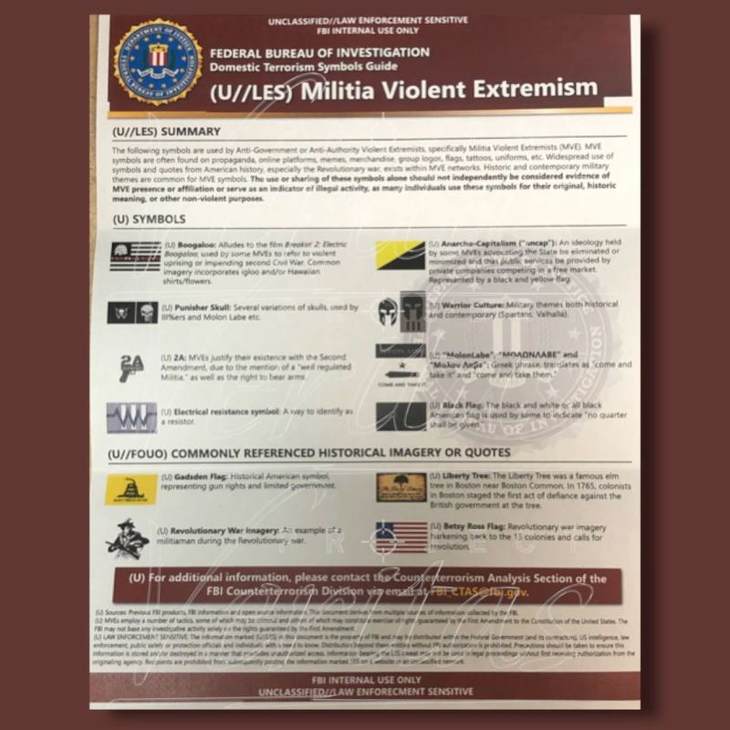Delaware — A small business owner with no criminal record was shocked this month when he watched a disturbing scene unfold on his Ring doorbell camera. When he checked the notification on his phone he noticed three armed men wearing tactical vests, dressed in t-shirts and blue jeans. Two of the armed men were agents with the Bureau of Alcohol Tobacco and Firearms (ATF) and the third was a Delaware state trooper.
Knowing he had committed no crime, the business owner who wishes to remain anonymous, had no idea why these men were there so he walked out to confront them before they ever knocked. The entire interaction was recorded on his camera system.
“Can I help you?” he asks.
The homeowner had recently made a firearm purchase and the ATF agent told him they were there to verify it. Making sure this wasn’t a scam or a setup, the homeowner verified their identification before proceeding.
The ATF agent then pulled out a list of recent firearms purchased by the man and demanded to see them. The ATF claimed they were investigating straw purchases. A straw purchase is when someone buys a gun for a third party who is not legally authorized to buy a gun themselves.
The following creepy dialogue then unfolded as the ATF showed the homeowner a list of all of his guns — which the ATF claims not to have.
Agent 1 – “All I’m doing is verifying that you have it, you got two different purchases. If you have them, I’m out of here. That’s how quick it is. Yeah. Do you have them with you by any chance?”
Homeowner – “They’re in my safe.”
Agent 1 – “If you can unload them and bring them out. We can go out to your foyer here, check them out, write the serial numbers and we’re out of here.”
Homeowner – “That’s it?”
Agent 1 – “Yep.”
Agent 2 – “That’s it. It will take five seconds.”
Trooper – “The reason we’re out here is obviously gun violence is at an uptick. We want to make sure – we’ve been having a lot of issues with straw purchases. One of the things, indicators we get is someone making a large gun purchase, and then a lot of times we’ve been there and ‘Oh, those guns got taken.’”
Agent 1 – “The idea is that when you purchase more than two guns at a time it generates a multiple sales report and it comes to us and we have to check them out. That’s all that is. You did nothing wrong – absolutely zero. I noticed you were stopped in Philly though with one of your guns?”
Trooper – “We’ll wait if you feel more comfortable.”
Homeowner – “I’m okay. I just – I didn’t expect…”
Agent 1 – “Oh no. It just came up. We came here, look, I’m telling you. There’s an email from the federal side saying can you make sure this guy’s got his guns. If you recently purchased a whole bunch of guns, if we can look at them and just scratch them off…”
Homeowner – “I have them all.”
Agent 2 – “We can look at them and write which ones you just bought, so we can save a trip from coming back. We’ll confirm that you have them.”
When the homeowner went back inside to retrieve his guns, the cops had a telling conversation outside, not knowing they were being recorded.
Trooper – “He doesn’t believe we’re cops.”
Agent 1 – “I don’t blame him.”
After showing the agents his firearm, they left. The homeowner had been coerced into a warrantless search of his property despite the fact that he was not suspected of committing a crime, nor was he the subject of any law enforcement action.
In fact, because the ATF agents did not have a warrant, it means they lacked any probable cause to obtain one. Their entire warrantless search relied on the compliance of the homeowner — who in hindsight says he wishes he wouldn’t have consented to the search.
A reporter with Ammoland spoke to the homeowner who told them this situation was embarrassing as it was disturbing.
“I was embarrassed,” the homeowner said. “My neighbors saw the whole thing – guys in these police vests standing in my yard. I was really uncomfortable. I felt really confused, like I was in some way being accused of something even though I didn’t commit a crime. It was quite embarrassing. I knew they couldn’t come in, but I didn’t know what to do. I didn’t want to get put on some watch list. We just got new gun laws here. I didn’t want them coming back again. I felt like they were invading my privacy.”
Unfortunately, it appears that this is going to become the new norm. In July of last year, US attorneys offices and the ATF announced that they will be investigating straw purchases more aggressively, “focusing not only on major cities, but also the neighboring towns and states.”
All the ATF needs to do is claim they suspect you of making a straw purchase and now they can come to your door and demand to see your guns. If that does happen, and they have no warrant, you do not have to show them your guns and can simply tell them this.
When federal agents are going door to door to verify gun purchases it means we are that much closer to a national gun registry which will not end well. How long until this disturbing scene unfolds on your doorstep?
Article posted with permission from Matt Agorist



